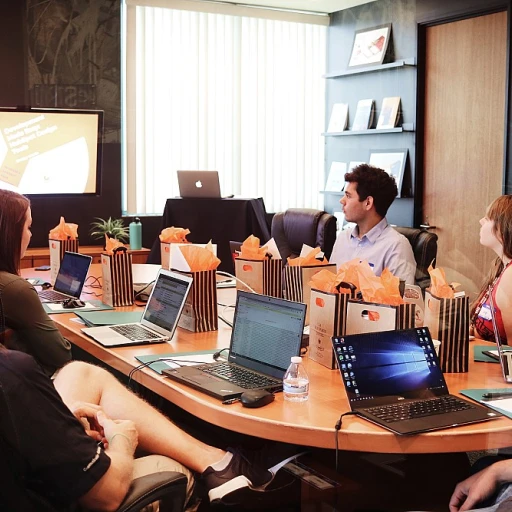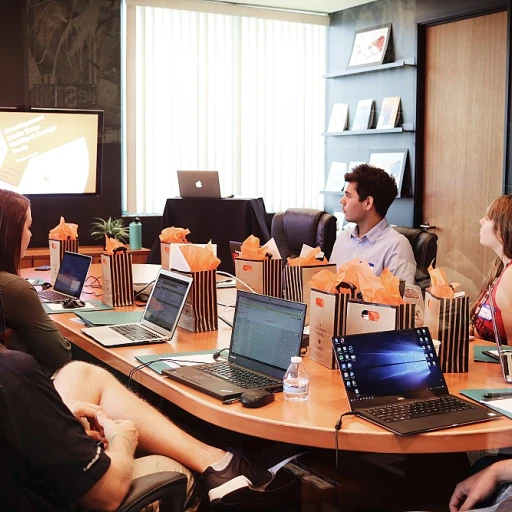
Understanding the Need for Reskilling
The Importance of Reskilling in Today's Workforce
In the fast-evolving landscape of the modern workforce, reskilling has become more crucial than ever. As industries rapidly transform, driven by technological advancements and shifting market demands, employees are finding the need to update their skills to stay relevant. This requires not just learning new skills but adapting to new training modalities as well.
The necessity for reskilling arises from several factors, including the increased demand for digital and technical skills, the rise of automation, and the need for continuous learning to keep pace with changing job requirements. With a plethora of training programs and delivery methods available—ranging from instructor led training to blended learning—individuals can choose a learning modality that suits their needs and schedules.
Traditional classroom settings may still hold value for some, but the rise of online learning platforms offers the flexibility to access learning content anytime and anywhere, making it easier for learners to upskill without compromising their current job commitments.
Given the varied intensity and content of different learning modalities, it is imperative to evaluate which training program could best enhance employee training. This decision might involve considering the performance outcomes expected or the specific muscle mass that needs strengthening—whether it's boosting technical skills or enhancing leadership capabilities.
Properly understanding the need for reskilling and effectively choosing the right training modalities can significantly impact an individual's employability and a company's competitive edge. For an in-depth understanding of aligning reskilling initiatives with individual evaluation needs, explore innovative methods for assessing learning in reskilling.
Traditional Classroom Training
Traditional Approaches to Skill Enhancement
When it comes to reskilling, traditional classroom training remains a relevant and widely used approach. This method typically involves instructor-led class sessions, where learners gather in a physical location to engage in training programs. Such classes focus on direct interaction between instructors and participants, offering valuable opportunities for immediate feedback and clarification. The format of instructor-led sessions can vary in intensity, from short workshops to extended courses. This makes them suitable for a diverse range of learning objectives beyond the traditional academic setting, and they can target various performance outcomes. The personal interaction fosters a group-based learning environment that can encourage collaboration and discussion, strengthening the learning process and building muscle mass in terms of a participant’s confidence and competence. Classroom training excels in creating an immersive experience where employees can benefit from a structured schedule, facilitating the gradual build-up of skills akin to body weight exercises in a physical training modality. The human-centric nature of this modality encourages learners to stay engaged, enhancing their ability to absorb content and apply what they've learned in real-world scenarios. However, the time commitment and logistical constraints of traditional settings can be challenging. As businesses and educational institutions adapt to new trends, combining this approach with other modalities, like eLearning or blended learning, enables a balanced training program that caters to the diverse needs of today's workforce. This flexibility, to adapt and shift modalities, ensures that various learning modalities can meet the evolving demands placed on both the instructors and the learners, ultimately supporting robust instructional design and efficient employee training. For those interested in deepening their understanding of how traditional methods integrate within broader educational strategies, exploring how insights from experts like Bersin enhance the learner experience offers substantial value. Understand more about enhancing the learner experience with Bersin's insights.Online Learning Platforms
The Rise of Digital Learning Environments
Online learning platforms have become a fundamental modality in the training landscape, revolutionizing how individuals and organizations approach reskilling efforts. Nowadays, the world of education and learning is not confined to traditional classroom walls; it extends into the digital realm, offering flexibility and accessibility that can complement various learning styles and schedules. Leveraging a vast array of content types, these platforms can accommodate different levels of intensity and adapt to the diverse needs of their target audiences. From interactive video courses to virtual simulations and elearning modules, the online space offers a wealth of options tailored to achieve specific learning objectives. One notable advantage of online learning environments is the ability to incorporate a mix of instructional design elements, allowing learners to engage with the material at their own pace. This approach not only caters to individual strengths but also supports muscle memory through repetitive practice sessions. In fact, a carefully crafted set of online classes can enhance both cognitive understanding and practical application, similar to the way strength training builds muscle mass over time. Furthermore, online platforms often encourage group collaboration and peer interaction through virtual classrooms and forums. These elements foster a community of learners who can share insights and support each other’s progress, mimicking the social dynamics of traditional in-person sessions. However, while online courses provide flexibility, they may sometimes lack the immersive experience offered by physical environments. A blend of modalities, such as blended learning, might be necessary to bridge this gap, combining online learning with face-to-face interactions to maximize performance outcomes effectively. For those looking to explore this modality further and enhance skills in a dynamic way, enhancing employee skills through effective store onboarding can be a valuable resource to consider.Blended Learning Approaches
Combining Traditional and Innovative Techniques for Optimal Learning
In today's rapidly changing world, the concept of blended learning approaches serves as a pivotal point for reskilling. This modality integrates the positive aspects of both traditional classroom training and digital methodologies to create a comprehensive learning experience. The unique advantage lies in its flexibility and adaptability to different learning objectives and styles. Blended learning is characterized by its multidimensional structure. It combines instructor-led sessions with online learning platforms, allowing learners to benefit from personalized training while also gaining access to a broad range of digital content. This dual approach helps in meeting the needs of diverse target audiences and enhancing performance outcomes. Key elements of a successful blended learning framework include:- Time Management: Efficient use of time by blending synchronous (live class sessions) and asynchronous (online modules) activities.
- Customization: Tailoring the training program to address specific skill-building requirements of learners.
- Interactive Content: Utilization of multimedia, such as videos and virtual reality, to engage participants and strengthen the learning experience.
- Flexible Delivery Methods: Various formats such as podcasts, webinars, and discussion forums support different learning modalities within the program.
On-the-Job Training and Mentorship
Integrating Practical Experience with Guided Mentorship
Incorporating on-the-job training and mentorship in a reskilling journey offers numerous advantages. This modality allows learners to apply theoretical concepts in real-world settings, effectively bridging the gap between knowledge and practical application. By engaging in hands-on tasks, employees can develop their skills iteratively, complementing other learning modalities. On-the-job training is often synonymous with experiential learning. It integrates various forms of knowledge delivery methods, like instructor-led sessions or virtual reality simulations, into workplace scenarios. This way, learners can immediately see the relevance of the content in their daily tasks. Thus, learning objectives are closely aligned with performance outcomes, making the training more impactful. Mentorship plays a vital role in enhancing this type of learning. Experienced mentors provide individualized guidance, allowing learners to navigate complex situations with confidence. This guidance can accelerate the process of absorbing new skills and reinforce the intensity of performance enhancement. Mentors can also help set realistic, achievable goals that align with the training program's objectives. Combined with other training modalities, such as online or classroom-based programs, on-the-job training offers an effective blended learning experience. Employees benefit from the strengths of diverse instructional designs, ensuring a comprehensive approach to skill development. These varied approaches can be compared to different types of physical training modalities, like aerobic and strength training, where a mix is often the most beneficial for building competence and muscle mass in both physical and intellectual aspects. The process is customizable to meet the needs of different learners, taking into account their unique backgrounds and current skill levels. Whether conducted in groups or individually, its flexibility is one of the major strengths. This approach fosters not only technical skills but also the attitudinal and cognitive muscles needed for today's dynamic work environment.Evaluating Training Modalities for Personal Needs
Assessing Learning Modalities for Individual Success
When selecting the right training modality to enhance your skillset, it’s essential to evaluate several factors that align with your learning objectives and personal needs. Each modality, whether traditional classroom training, online platforms, or blended learning, has unique characteristics that can impact your performance outcomes.- Time and Intensity: Consider how much time you can dedicate to learning and the intensity of the program you can handle. For example, instructor-led training often has a fixed schedule with class sessions, which might not be flexible enough if you have other commitments.
- Nature of the Course Content: The complexity and nature of the training content should dictate the choice of learning modalities. Technical or hands-on courses might benefit more from on-the-job training and mentorship, where you can build "muscle mass" in real-world scenarios.
- Learning Preferences and Strengths: Identify your learning modality preferences and strengths. If you thrive in collaborative environments, group learning sessions or a blended learning approach may better suit you. For those who prefer self-paced learning, online courses offer the flexibility to learn at your own time.
- Performance and Feedback: Understanding the feedback mechanisms associated with each modality can aid your learning. Regular feedback in virtual reality or e-learning can help adjust your "aerobic capacity" for absorbing knowledge quickly.
- Instructor and Delivery Methods: Different delivery methods can alter the effectiveness of the training you receive. Instructor-led sessions might work best if you need the guidance of an expert, whereas a more independent learner might prefer online training programs.













